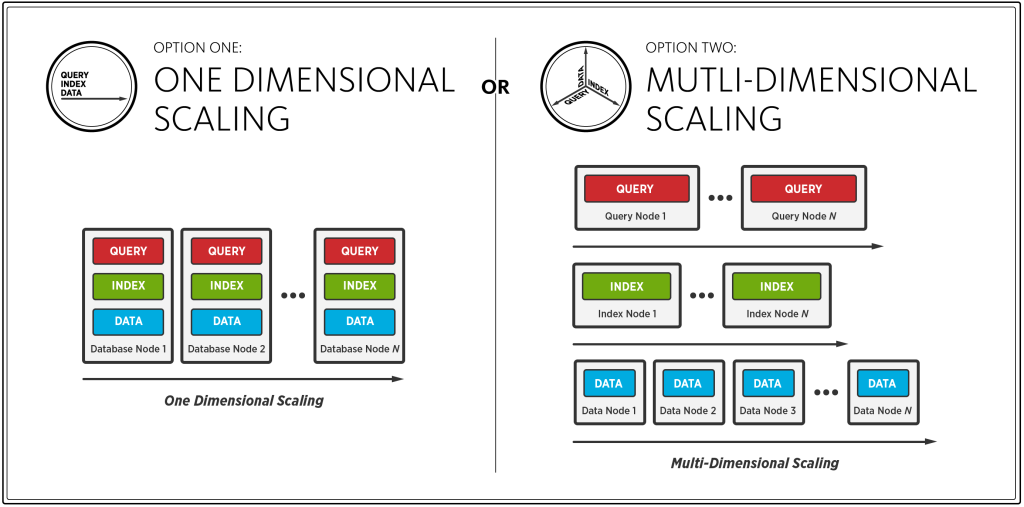
Couchbase Breaks Up NoSQL Database Functions for Scalability

Couchbase today unveiled a plan to boost the scalability and performance of its NoSQL database by allowing customers to separate key database functions and run them on dedicated servers.
The multi-dimensional scaling capability that Couchbase plans to ship later this year with Couchbase Server 4.0 will allow customers to separate three key workloads that the database performs—indexing, queries, and reads/writes—and thereby get around a built-in limitation in the database’s scale-out architecture.
“Multi-dimensional scaling basically allows you to separate these tasks and run them on different servers and scale those servers independent from one another,” says Couchbase CEO Bob Wiederhold. “The ability to isolate each of those three tasks in your underlying cluster or database, and be able to scale them independently will result in substantially higher performance.”
The new architecture in Couchbase Server 4.0 will let allow customers to optimize the configuration of each server for each task. For example, since basic reads and writes are constrained by the amount of memory that’s available, the customer will want to run reads and writes on a server or cluster with a lot of RAM. Creating and updating indexes, meanwhile, is a very disk-intensive operation, whereas queries generally tax the CPU.
All of these servers would remain within the same cluster, and communicate database change protocol (DCP), a memory-to-memory communications technology that Couchbase introduced in version 3.3. Typically, each node type in the cluster would be located in the same physical data center; splitting up the node types geographically would introduce unwanted latencies into the database operation.
Applications will be completely immune from any architectural changes brought about by multi-dimensional scaling, and it shouldn’t introduce any additional work on the part of the administrator. In fact it may help alleviate some headaches, says Wiederhold.
“As your workload changes, you may come the conclusion that you need to beef up your index or query server and you can do all of that on the fly,” he says. “You have to watch and figure out what the right topology is, but I would maintain at the end of the day it’s going to be easier because you’re not trying to figure out how to optimize the running of three functions on the server. You can separate those things and as a result it’s easier to manage.”
The company isn’t saying what kind of performance boost to queries and indexing that Couchbase users can expect out of this new approach. It’s working up some numbers, and will share them as we get closer to the actual launch of Couchbase Server 4.0 later this year.
Couchbase has always maintained a performance advantage in reads and writes over Cassandra and MongoDB, Wiederhold says. “The reads and writes will stay where they are today,” he says. “But now we can get much higher performance at scale with index and query.”
Couchbase is the first NoSQL database vendor to adopt this approach, Wiederhold says. “We believe in the future all NoSQL databases are going to have to use this approach to get the kind of performance at scale that most customers want,” he says.
The complexity curve may have notched up a tick with this approach, but for NoSQL databases, that appears to be the price you’ll have to pay to increase performance.
Related Items:
Couchbase Doesn’t Take $60M Round Lying Down
Couchbase Eyes IoT with Mobile NoSQL Database
Seeking High Scalability, Viber Opts for Couchbase






























